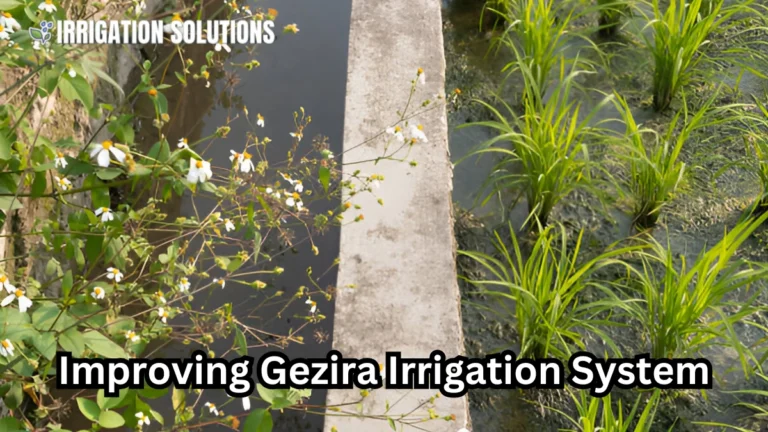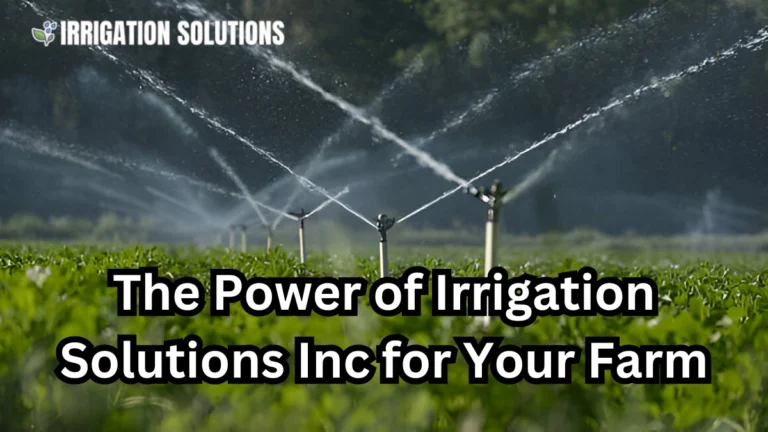best irrigation solutions used today

Water scarcity has become one of the most critical challenges in agriculture, impacting food security and environmental balance. Implementing efficient irrigation solutions is essential for optimizing water use, enhancing crop yields, and reducing resource wastage. This blog dives deep into modern irrigation techniques, their benefits, and practical applications for farmers worldwide.
Why Effective Irrigation Matters
Irrigation supports over 70% of global freshwater consumption, making it essential to adopt sustainable practices. Poor water management can lead to:
- Soil degradation.
- Reduced crop productivity.
- Wastage of water resources.
Adopting advanced irrigation solutions helps conserve water while ensuring crops receive optimal hydration.
Types of Irrigation Solutions
Farmers use diverse irrigation techniques tailored to their specific needs. Each method offers unique benefits, but the choice depends on factors like soil type, crop type, and water availability. Here’s a detailed look:
Surface Irrigation
- Definition: Involves distributing water across the soil surface.
- Common Methods: Basin irrigation, furrow irrigation, and border strip irrigation.
- Advantages: Simple, cost-effective, and ideal for flat terrains.
- Challenges: High water wastage and uneven distribution.
Drip Irrigation
- Definition: Delivers water directly to the plant’s root zone through emitters.
- Key Benefits:
- Reduces water usage by up to 50%.
- Minimizes weed growth.
- Improves fertilizer efficiency.
- Use Case: Commonly used for fruit trees, vegetables, and flowers.
Sprinkler Irrigation
- Definition: Sprays water into the air, simulating rainfall.
- Advantages:
- Suitable for various crops and uneven terrains.
- Provides uniform water distribution.
- Limitations: Prone to water loss from evaporation and wind drift.
Subsurface Irrigation
- Definition: Applies water below the soil surface, directly to the root zone.
- Advantages:
- Eliminates evaporation losses.
- Enhances water efficiency.
- Challenges: High initial installation costs.
Modern Technological Advances in Irrigation
Advancements in technology have revolutionized irrigation systems. Here are some innovative solutions shaping the future:
Smart Irrigation Systems
- Definition: Automated systems that use sensors to deliver precise water amounts based on soil moisture, weather, and crop requirements.
- Benefits:
- Reduces water consumption by 30-50%.
- Enhances crop health through tailored hydration.
- Example: Smart controllers linked with weather forecasting tools.
Solar Powered Irrigation
- Features: Combines solar panels with pumps to provide eco-friendly water distribution.
- Benefits:
- Reduces dependency on electricity or fossil fuels.
- Cost effective for remote areas with limited power access.
Drones and Imaging Technology
- Usage: Identifies water-stressed areas in fields using thermal imaging.
- Impact: Enables precise irrigation planning and improves overall efficiency.
Comparison of Irrigation Solutions
| Irrigation Type | Water Efficiency | Cost | Best For | Challenges |
| Surface Irrigation | Low | Low | Grains, rice | High water wastage, uneven flow |
| Drip Irrigation | High | Moderate | Vegetables, fruits | Clogging of emitters |
| Sprinkler Irrigation | Moderate | Moderate | Various field crops | Evaporation losses |
| Subsurface Irrigation | Very High | High | Perennial crops | High installation costs |
| Smart Irrigation Systems | Very High | High | Large-scale farms | Requires technical knowledge |
Case Studies: Successful Implementation
Case Study 1: Transforming Indian Agriculture with Drip Irrigation
In Maharashtra, India, farmers introduced drip irrigation systems to combat water shortages. This transition resulted in:
- 40% water savings.
- Improved yields for crops like sugarcane and pomegranates.
- Enhanced farmer income by 30%.
Case Study 2: Smart Irrigation in California
Large-scale farms in California adopted sensor-based irrigation systems, leading to:
- Reduced water usage by 35%.
- Significant cost savings on energy and water bills.
- Healthier crops with optimized hydration.
Benefits of Efficient Irrigation
Switching to modern irrigation solutions offers multiple benefits, including:
- Water Conservation: Reduces waste and preserves resources.
- Cost Savings: Lowers expenses on water and fertilizers.
- Enhanced Productivity: Provides optimal hydration for higher yields.
- Environmental Impact: Minimizes soil erosion and nutrient runoff.
Practical Tips for Choosing the Right Solution
- Analyze Soil and Crop Needs:
Different crops require varying levels of water. For instance, vegetables thrive on drip irrigation, while rice benefits from surface irrigation. - Assess Budget Constraints:
Start with low cost methods if funds are limited, but plan for long term investments in efficiency. - Consider Local Climate:
Opt for solutions that suit the regional weather. For example, sprinkler systems are ideal for areas with low wind and moderate temperatures. - Seek Expert Guidance:
Consulting agronomists or local extension services can help identify the best option.
Conclusion
Adopting efficient irrigation solutions is not just a necessity it’s a pathway to sustainable agriculture. Whether you’re a small-scale farmer or managing large fields, leveraging modern irrigation techniques ensures better resource management, higher productivity, and a positive environmental impact.
As water becomes an increasingly scarce resource, embracing these innovative systems is vital. With the right approach, farmers can balance profitability and sustainability for generations to come.






